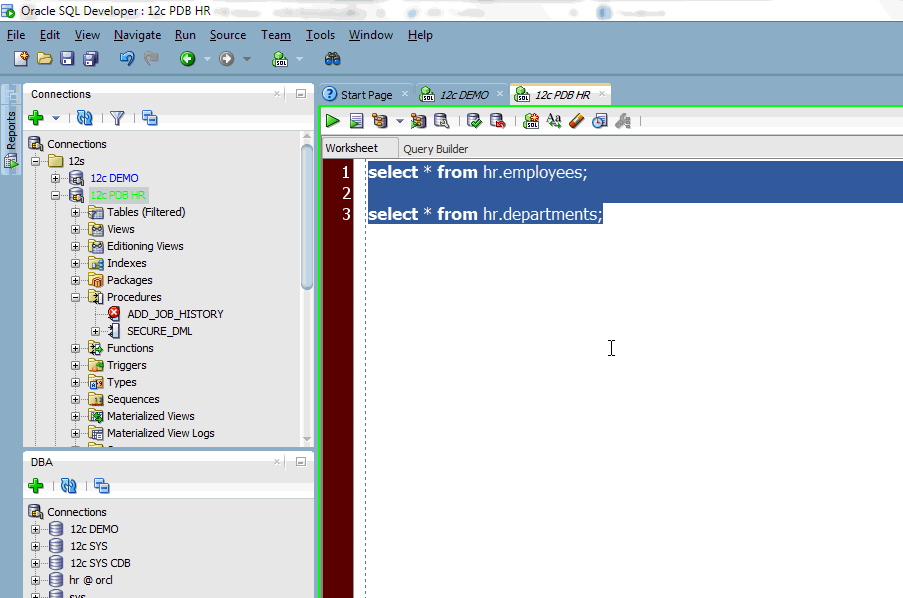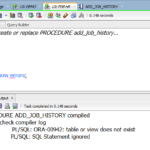Impatient?
Want to run a query, then run another – getting both sets of results to a data grid?
Don’t mind leaving cursors open?
These are serious questions.
But if you’re feeling adventurous, feel free to try this out.
- Select multiple queries
- Execute
Or, if you prefer to watch the movie…

Did you notice that ‘bonus’ tip?
Mousing over the resultset grid gives you a context hint as to the query used to populate said grid.
About that ‘Adventurous’ bit…
The queries executed result in cursors used to hold the results of said queries. These cursors stay open until ALL of the records have been read back to the client. If you have a habit of running queries and leaving the data grid panels open, without fetching ALL of the results – don’t get sore at SQL Devleoper when your DBA(s) starts barking at you for consuming so many server resources. CLOSE THOSE GRIDS WHEN YOU’RE DONE WITH THEM.
DBAs, you’re welcome.









1 Comment
Quote:
“If you have a habit of running queries and leaving the data grid panels open, without fetching ALL of the results – don’t get sore at SQL Devleoper when your DBA(s) starts barking at you for consuming so many server resources. CLOSE THOSE GRIDS WHEN YOU’RE DONE WITH THEM.”
The same happens in MS-SQL?